MercoPress. South Atlantic News Agency
Tag: Thwaites Glacier
-
Tuesday, February 27th 2024 - 20:27 UTC
Scientific teams conclude summer studies at Antarctica’s giant Thwaites Glacier
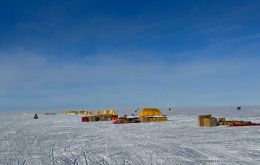
Teams of scientists and support staff with the International Thwaites Glacier Collaboration, (ITGC) have spent the past couple of months working on the Thwaites Glacier to advance our knowledge of how it interacts with the ocean and climate, and improve the predictions of its future contributions to sea level rise.
-
Monday, July 24th 2023 - 10:45 UTC
Sixty years compilation of research on Antarctic ice and topography
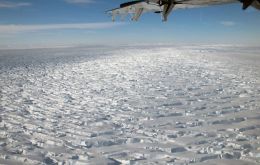
In a significant milestone for Antarctic research, detailed and extensive information on ice thickness and bed topography is now available for the first time in a centralized and standardized format, the British Antarctic Survey has announced.
-
Thursday, January 30th 2020 - 08:33 UTC
Scientists surprised at unusual temperature at the base of huge glacier in Antarctica
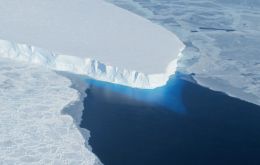
Scientists in Antarctica have recorded, for the first time, unusually warm water beneath a glacier the size of Florida that is already melting and contributing to a rise in sea levels. The researchers, working on the Thwaites Glacier, recorded water temperatures at the base of the ice of more than 2 deg C, above the normal freezing point.
-
Friday, November 15th 2019 - 09:30 UTC
US/UK scientific team on major mission to the Thwaites Glacier in West Antarctica
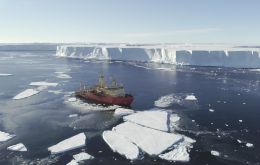
Nearly 100 scientists and support staff departed this week for the most ambitious mission to date for Thwaites Glacier in West Antarctica.
-
Wednesday, May 2nd 2018 - 08:13 UTC
UK-US launch Antarctica research program to predict sea-level rise
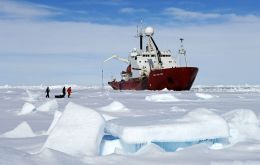
A new UK-U.S. Antarctic research program to improve the prediction of future sea-level rise was launched on Monday at British Antarctic Survey (BAS), Cambridge. The £20 million 5-year research collaboration, funded jointly by the UK Natural Environment Research Council (NERC) and the U.S. National Science Foundation (NSF), brings together over 100 polar scientists from leading UK and U.S. research organizations.
-
Thursday, June 12th 2014 - 07:32 UTC
Researchers find major West Antarctic glacier melting from geothermal sources

Thwaites Glacier, the large, rapidly changing outlet of the West Antarctic Ice Sheet, is not only being eroded by the ocean, it's being melted from below by geothermal heat, researchers at the Institute for Geophysics at The University of Texas at Austin (UTIG) report in the current edition of the Proceedings of the National Academy of Sciences.
-
Monday, October 15th 2012 - 22:06 UTC
NASA IceBridge on its fourth edition to study Antarctica’s polar ice changes

Scientists and flight crew members with Operation IceBridge, NASA's airborne mission to study Earth's changing polar ice have started another campaign over Antarctica. Now in its fourth year, IceBridge's return to the Antarctic comes almost a year after the discovery of a large rift in the continent's Pine Island Glacier.
